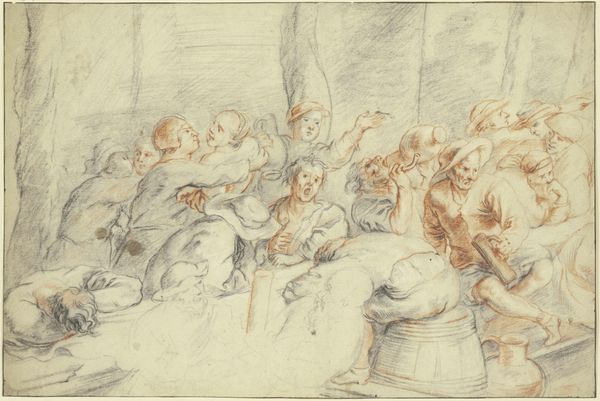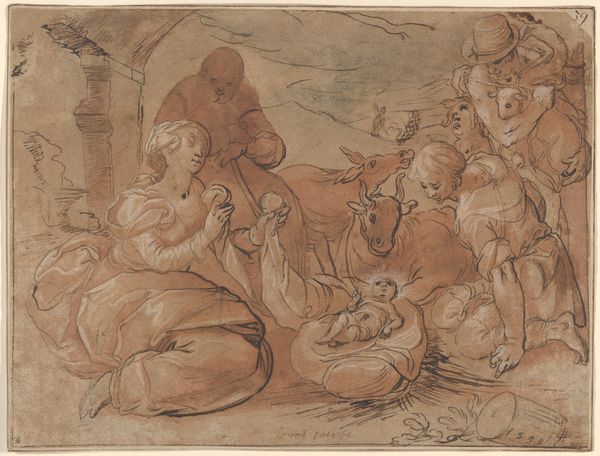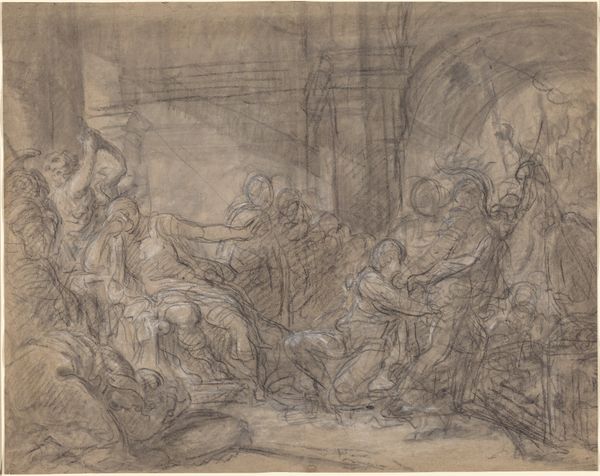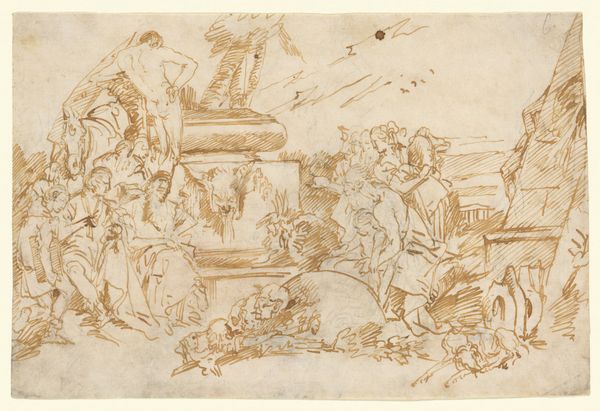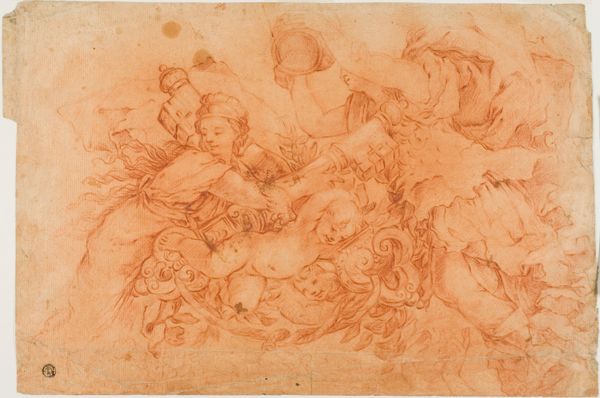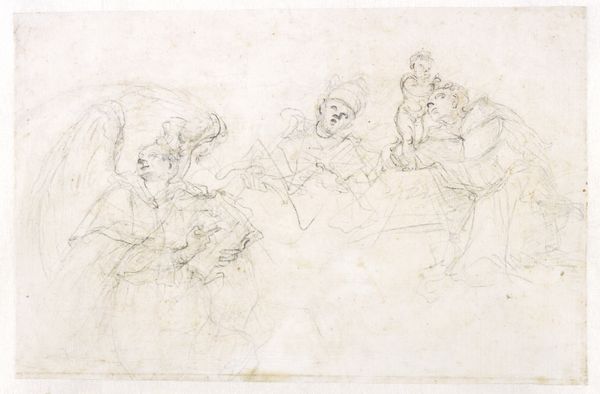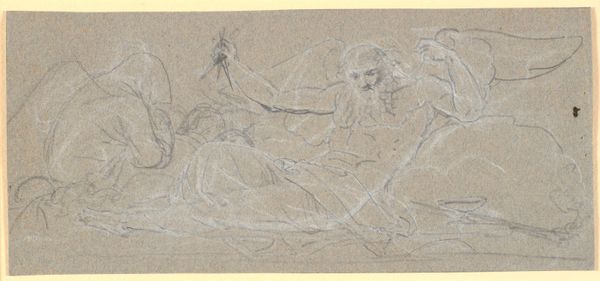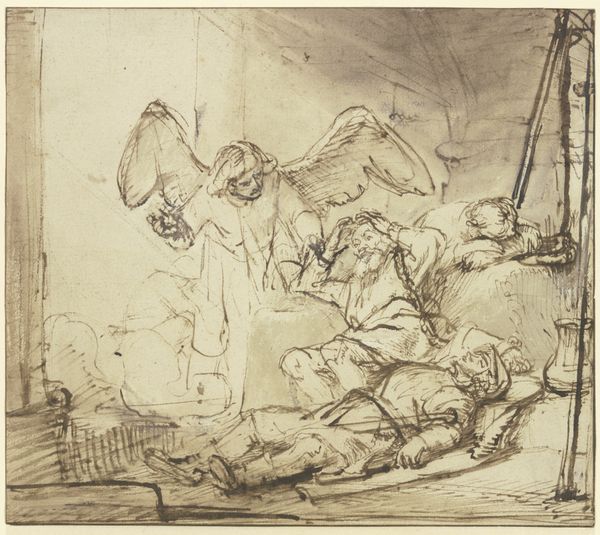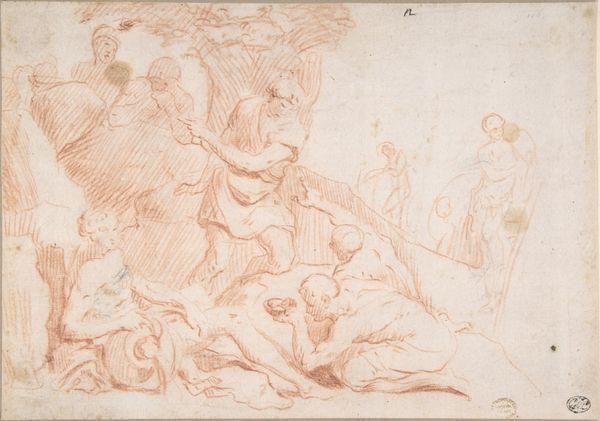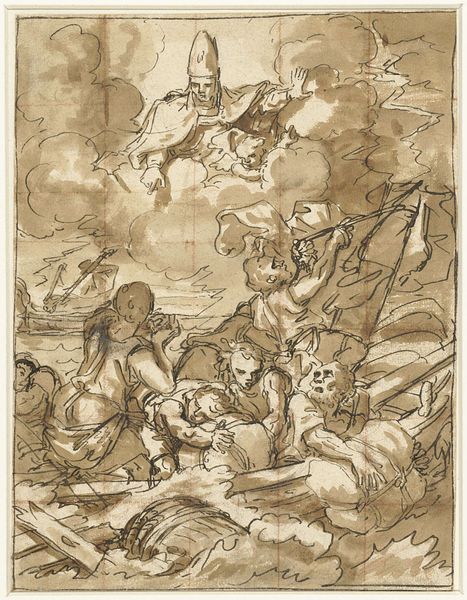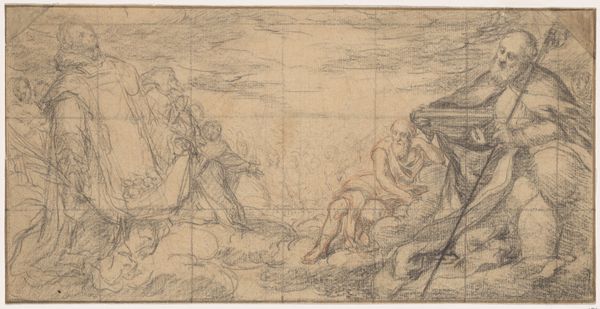
drawing, print, ink, pencil, charcoal
#
drawing
#
baroque
#
ink painting
# print
#
death
#
pencil sketch
#
charcoal drawing
#
figuration
#
ink
#
pencil
#
charcoal
#
history-painting
Dimensions: Oval: 5-7/8 x 9-1/16 in. (14.9 x 23.0 cm)
Copyright: Public Domain
Editor: Here we have “Death of a Saint,” dating from sometime between 1600 and 1800, currently residing at the Metropolitan Museum of Art. The artist is anonymous, and it’s made using ink, charcoal, and pencil on paper. There's an undeniably ethereal quality, even in just a sketch. What can you tell me about how its production relates to its meaning? Curator: Consider the means of production here. We have a sketch, likely a preparatory work. Ink, charcoal, and pencil – relatively inexpensive and easily accessible materials, unlike say, precious pigments. How does the choice of these materials, their inherent reproducibility via prints, speak to the dissemination of religious imagery and its consumption during the Baroque period? Editor: That’s interesting. So, the choice of materials wasn’t necessarily about artistic expression alone? Curator: Not entirely. The availability and affordability of these materials made it possible for religious narratives to reach a wider audience. Think about the labor involved – perhaps workshops mass-producing prints based on sketches like these. Is the emphasis on the spiritual narrative a way to gloss over the commercial enterprise driving its production and distribution? Editor: That makes me think about the concept of authenticity in art. Does knowing it’s a study or a print impact its value, culturally or even economically? Curator: Precisely. The 'aura' of a unique, divinely inspired masterpiece versus the product of a workshop, churning out images for profit… which holds more social capital, and why? The drawing itself depicts a saint's demise, and it uses specific drawing methods such as charcoal. So does the materiality deconstruct or emphasize what baroque truly is. Editor: I never thought about religious art in terms of production and consumption like that. Thank you! Curator: It is all too easy to look past the actual manufacturing and think that the artists are entirely spiritual. Examining that dynamic reveals how economic realities shaped artistic choices.
Comments
No comments
Be the first to comment and join the conversation on the ultimate creative platform.
